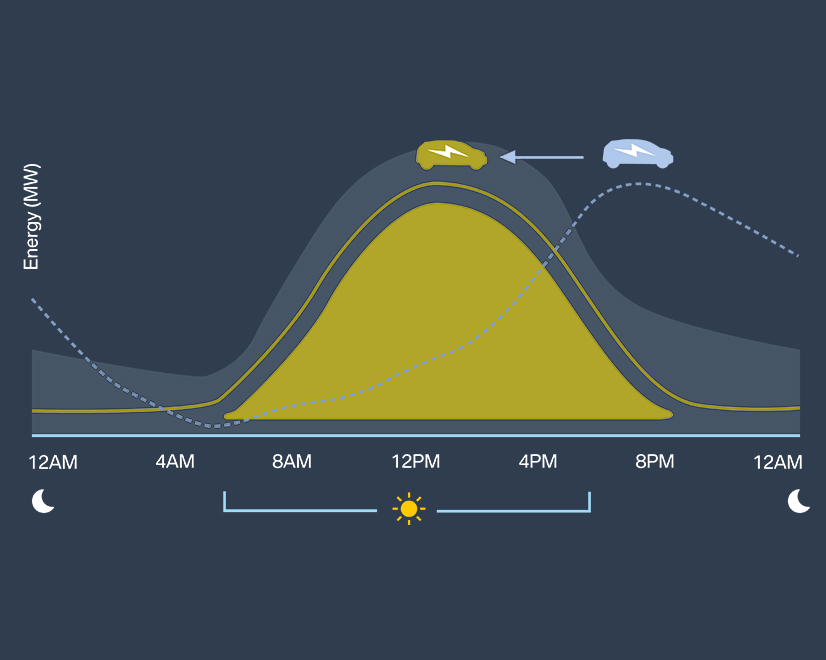
Managed-charging strategies are emerging to smooth out demand as incentives intended to encourage electric vehicle owners to charge during off-peak hours create late-night surges in power use.
The so-called “rebound timer peak” occurs when utility customers set timers to start charging their electric vehicles during the same off-peak hours, said Joseph Vellone, head of North America for EV Energy. The company offers a platform for managing home EV charging.
“Once the off-peak hours kick in … the grid will actually see a surge in load, particularly clustered around affluent, EV-rich areas,” Vellone said. Those hours might start at 8 p.m. in some areas or at midnight in others.
Vellone spoke this month during an Arizona Corporation Commission (ACC) workshop on transportation electrification. The commission will consider adoption of a statewide transportation electrification plan this year.
Managed charging was part of the discussion. Vellone listed several examples of managed-charging initiatives, including BMW’s ChargeForward program.
ChargeForward is aimed at shifting EV charging to times when more renewable energy is available, reducing strain on the grid. When an EV owner plugs in their car, the vehicle telematics system starts communicating with BMW about the state of charge. The driver indicates when they’ll need the car and how far they’ll be traveling.
The system looks at current grid and renewable energy conditions, as well as energy prices, for that location. It also factors in whether the driver prefers lower charging cost or higher use of renewable energy. EV owners receive incentives for participating in the program.
In California, Silicon Valley Clean Energy offers a managed-charging program called GridShift. The program shifts EV charging to times with off-peak rates. It alerts participants to opportunities to charge during “low-carbon events,” for which they can earn credits on their electric bill, Vellone said.
Vellone noted that managed-charging programs for EVs require a charger that’s connected to the internet.
Three Levels of Adoption
The discussion of a statewide transportation electrification plan comes after the commission issued a decision in 2019, ordering the state’s utilities to develop a long-term, comprehensive statewide transportation electrification plan.
Arizona Public Service Co. (APS) and Tucson Electric Power Co. (TEP) worked with consultants Energy and Environmental Economics (E3) to release a framework for the plan in 2019. In a second phase of their work, they released a transportation electrification plan in March.
The plan describes the two companies’ efforts to support transportation electrification in Arizona and also includes recommendations for state and local governments, transit agencies, EV service providers and representatives of underserved communities.
The plan analyzes three levels of EV adoption. A low-adoption scenario assumes EV adoption stays on its current trajectory, with a projected 249,771 light-duty EVs on the road in Arizona in 2030.
The medium-adoption scenario includes 1 million light-duty EVs in the state by 2030. A high-adoption scenario increases the number of EVs to 1.5 million in 2030, or about 20% of light-duty vehicles in the state.
A cost-benefit analysis found that the medium-adoption scenario would result in billions of dollars in savings to EV owners, electric utility ratepayers and the state as a whole.
“These benefits will not materialize without effective planning and coordination to accommodate the large-scale changes that support TE [transportation electrification] for both the transportation and electric power sectors,” the report said.
Reaching the medium-adoption goal will likely require “a significant increase in supportive policy, funding and programs, including a large scale-up of charging infrastructure and expanded education and outreach initiatives to increase awareness of TE options,” the report said.
Different Viewpoints
Some groups are urging the commission to aim for the high-adoption target.
“We support the high-adoption scenario because the utilities need to plan for and be prepared to meet their peak load,” Adam Stafford, senior staff attorney with Western Resource Advocates, said in a filing with ACC.
The high-adoption scenario would help parts of the state that are in non-attainment of federal ozone standards come into compliance, and address associated economic impacts, Caryn Potter, utility program manager for the Southwest Energy Efficiency Project (SWEEP), said in a letter filed with the commission.
In opening remarks during the workshop, Commissioner Justin Olson said the commission should not require ratepayers to subsidize an industry. Commissioner James O’Connor said he was also concerned about subsidies.
“If we’re requiring customers to pay more than that just and reasonable rate in order to subsidize another customer … for some purpose — in this case it would be in order to encourage the adoption of electric vehicles — that’s from my perspective, beyond our constitutional authority, and that’s something that we should not do,” Olson said.
Although someone could make a case that increased EV adoption would produce a public good, it’s an issue more appropriate for the Legislature, which has taxing authority, Olson said.
“Let the free market work,” he said.


